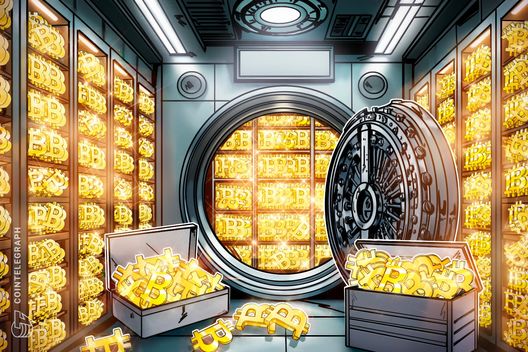FOMC preview: Looking past January
9 min read

Recent economic data have made it clear
But before that, the Fed will use the next two meetings to put forth its plan for its balance sheet, he said.
Subadra Rajappa, head of U.S. rates strategy at Societe Generale, sees 150 basis points of cuts, with the first “penciled in” for the May meeting, although she believes “data will be crucial.”
The markets have priced in those six rate cuts, Rajappa noted, with an expected mild recession midyear spurring the loosening of monetary policy.
While the presidential election could complicate things, since the Fed doesn’t like to alter monetary policy leading up to an election because it could ding their cloak of neutrality, Rajappa said, “this time Fed may be more willing to” act in the meetings before November.
Of course, with the markets already pricing in rate cuts, she said, “we’re starting to see transmission of lower interest rates into the economy, which delays recession.”
May or June will be the starting time and 160-plus basis points of cuts are the baseline for BCA Research, although March remains in play. Quantitative tightening will also end this year, they say.
“The Fed will move toward rate cuts by the middle of this year in response to falling inflation and weakening labor demand, BCA U.S. bond strategist Ryan Swift said in a report.
BCA sees a “dovish surprise to expectations … in the second half of the year after the recession has begun.” Without a recession, “we estimate that the Fed will end QT in November 2024 because bank reserves will have reached the necessary threshold.”
The Fed will offer “signals” at this meeting, said
While inflation has slowed, “the last mile may be the most difficult,” he said. “Squeezing the last bit of inflation out of the system takes time.”

Additionally, Mathews noted, the Fed will want to be certain inflation will remain low before making its first rate reduction. His prediction lies closer to the Fed’s expectation for three cuts than the fed futures’ pricing in twice as many cuts. “We think the Fed will cut interest rates by 0.75% to 1.00%.”
“While there has been a concerted effort from recent Fed speak to push back against more aggressive March pricing, we suspect they will try and preserve two-way optionality for near-future meetings,” he said.
He focuses on “sticky wage and housing inflation, along with still robust job creation and its impact on consumer driven inflation.”
The worst outcome for the Fed would be to reduce rates then “find itself in a position where it needs to retighten conditions,” Loh said, therefore, the Fed will “err on the side of a slower rate cut cycle.”
Peter Ireland, an economics professor at Boston College and
If the economy shows signs of weakening, he said, “rate cuts could come faster and harder.” However “that’s just a risk at this point, not a baseline scenario.”

Peter Julian
Some observers have speculated that Fed Chair Jerome Powell “did not intend to seem so dovish at the press conference following the last FOMC meeting,” Ireland said. He now has “a chance to correct that misperception.”
Watch for “how much Powell tries to push back against market expectations and chatter among Fed watchers,” Ireland said. “Either way, it will be informative.”
Given recent data, “there could be sentiment within the committee to send a slightly more hawkish message this time.”
The Fed will likely keep rates restrictive in the first half, said
Torres sees three rate cuts, starting in June, with further QT. “But market volatility is likely to emerge, like the yield spikes of 2018 and 2019 and the bank failures of 2023, as the pain of the Fed’s declining balance sheet is felt harshly by markets,” he said. “Liquidity is abundant until it isn’t.”
Societe Generale’s Rajappa said, “A March rate cut would be premature.” So why are the markets pricing in the possibility of a rate cut that soon? Based on history, a rate cut comes about six to nine months after the final hike. “Since the last rate hike was in July, the March timeframe seems appropriate for a policy pivot.”
Additionally, core personal consumption expenditures have risen about 2% on three- and six-month annualized bases, she noted. “If inflation is in fact around 2.5% relative to 3.25-3.75% last year, a Fed funds target range of 5.25-5.5% could be quite restrictive, especially in the context of further disinflation in the coming months. With inflation moderating, the slowdown in growth and employment is a growing concern for policy makers. Manufacturing is arguably already in a recession. In this context, insurance cuts are hard to rule out.”
Given lags in monetary policy, rate cuts “before the data deteriorate meaningfully could pre-empt a hard landing,” Rajappa said.
Still, while inflation has trended lower, she said, “the Fed is still far from its price stability goal.”
So, “we continue to believe that the Fed will wait until May to ease rates,” Rajappa said.
Wilmington’s Tilley sees the Fed navigating a soft landing. “I think they tightened more than they needed to but not significantly more, and inflation is coming down.”
Also, businesses and consumers weathered higher rates, he noted. “As long as businesses don’t retrench on capex and on hiring, then there’s no reason for us to have a recession,” Tilley said. Especially with consumer spending also strong.

State Street’s Loh is watching the Fed balance sheet as well. “With QT having shrunk the balance sheet by $1.2 trillion, we have started to see some strains in the funding market, although those have been limited and transitory.”
Some have called for an end to QT, but Loh said, “we think [that] would be a mistake. While the economic impact of an ultra large balance sheet is less known, we think there are ultimate cost from excess liquidity. We think that continued robust credit conditions are one such impact, which influences the forward path for inflation.”
The market is also pricing in “roughly 1.00% more easing than the Fed has signaled,” he noted. “Given recent comments from Fed officials we would not be surprised if the Fed pushed against those market predictions.”
A “softish” landing is the base case for Sage Advisory’s Managing Director Rob Williams and co-CIO Thomas Urano. Although they see “a higher probability of one or two quarters being pushed into modestly negative territory.”
The weaker growth will help “to moderate inflation, but we expect the deflationary pace to be less impressive in 2024, with supply-side shocks now largely normalized,” they said.
“We believe those expecting an early-year, aggressive pivot by the Fed will be disappointed,” Williams and Urano said, since “employment is much stronger and inflation higher than when the Fed has started to pivot in past cycles.”
Th anticipation of lower rates “has sharply reinverted the yield curve — sometimes a harbinger of an economic downturn,” said Investment Partners Asset Management CEO Gregg Abella. “Any cuts that do come will likely occur later in the year and be shallower than the market expects.”
Morgan Stanley said in a note, “The market narrative that the end of QT is coming soon has been overdone. Earlier start will be paired with a slower taper.” Morgan Stanley sees an announcement of a QT taper in May, beginning in June, with Treasuries cut to $30 billion a month and leaving mortgage-backed securities “to run off with prepayments.”
The
But the Fed response to the equity market highs, which suggest “an easing of financial conditions,” he said, “will be interesting.”
“The Fed could signal a more hawkish bias than the markets expect, in order to cool off roaring financial asset prices that make the Fed’s job of getting inflation sustainably back down to 2% more difficult,” Robis said.
Fedspeak has “all sounded a similar tone,” suggesting March would be too soon for a rate reduction, he said. “The Fed remains on track to begin cutting rates by mid-year, perhaps as soon as the May FOMC meeting if the economic data softens enough over the next few months.”
But since the FOMC has declared it will be data dependent, Robis said, “the more likely outcome is that rate cuts will begin a bit later, but by a larger amount once they start, than markets now expect.”
The yield on the 10-year U.S. Treasury bill “should remain stuck in a 3.90% to 4.25% range until there is more clarity on labor market weakness, when yields will then break to the downside,” he added.
While the Fed first meeting of the year is more “organizational,” given the rotation of voters,
“Most likely, central bankers will want to re-emphasize their data-dependent ‘wait and see if inflation really cools further’ stance, but not without acknowledging the recent progress on disinflation,” he said. “In our view, any optimism about progress on inflation is simply a justification that interest rates are indeed high enough — at least for now.”
Of course the Fed will have to be careful since “markets tend to overreact to anything that might be perceived as dovish,” Scherrmann said. “Any further unwanted easing of financial conditions as a result of such an interpretation unnecessarily complicates matters for central bankers.”
Back to the rotation of voters, Scherrmann said, it “may shift the average stance a bit more to the hawkish side, further supporting a higher for a bit longer narrative.”





